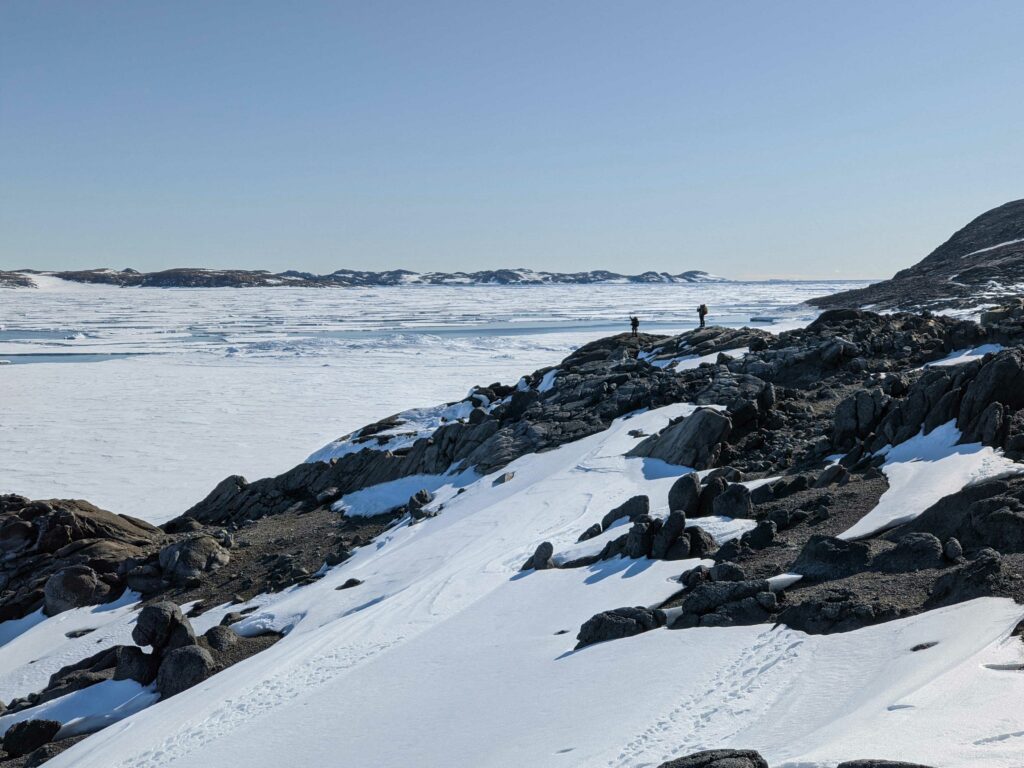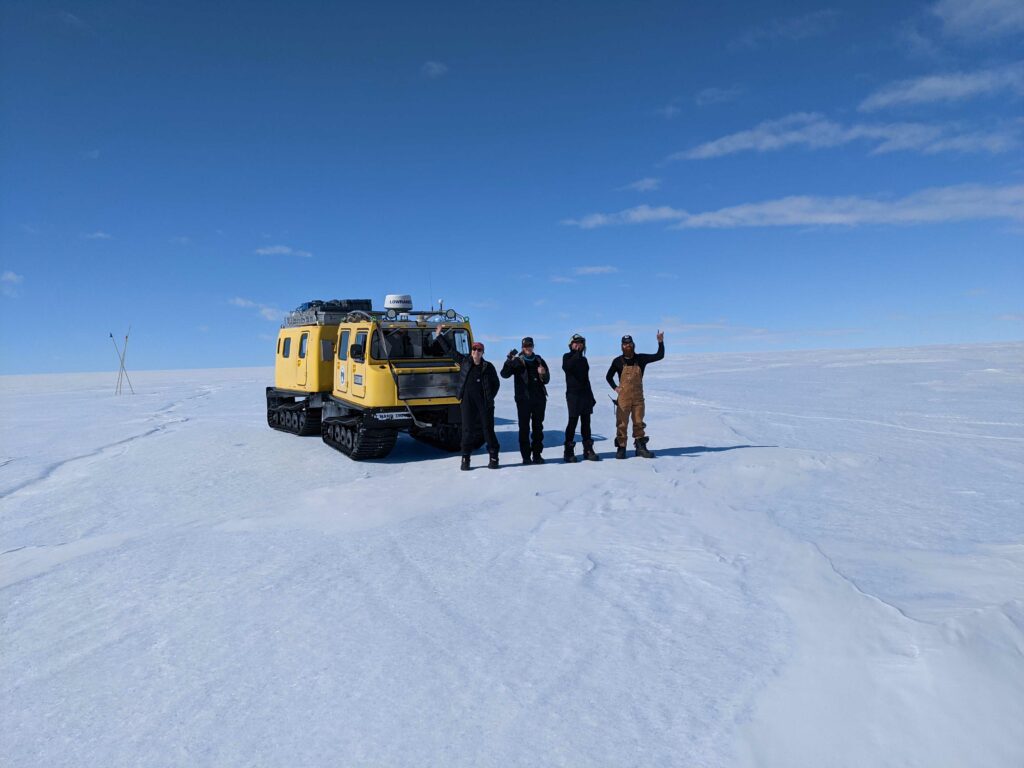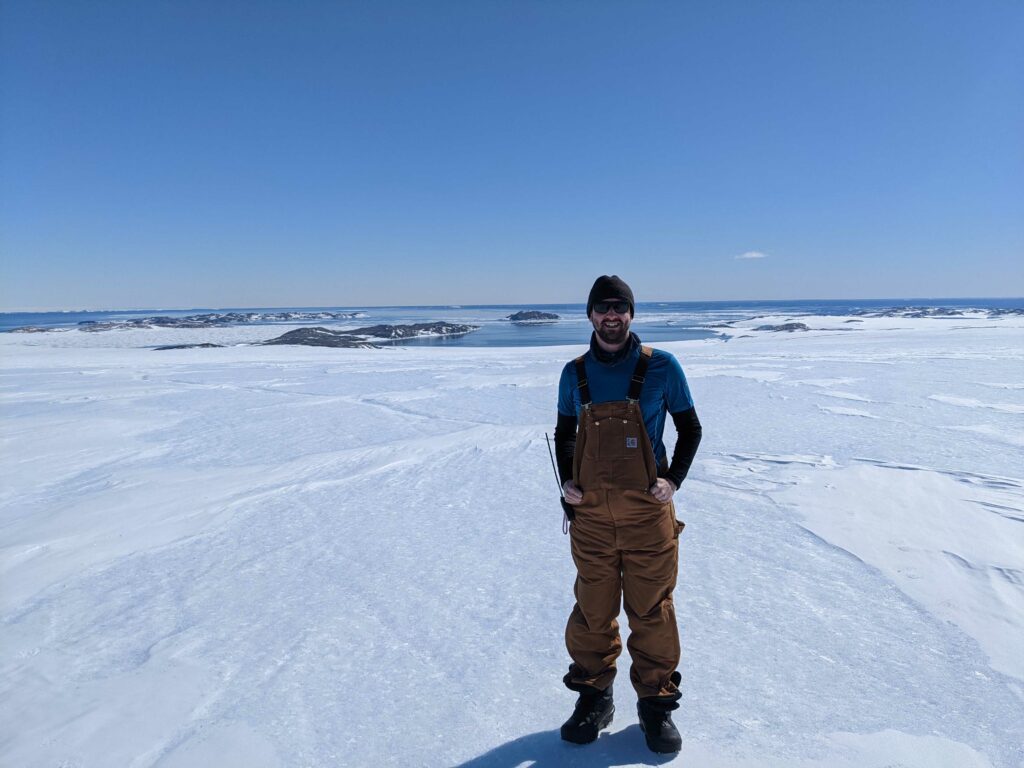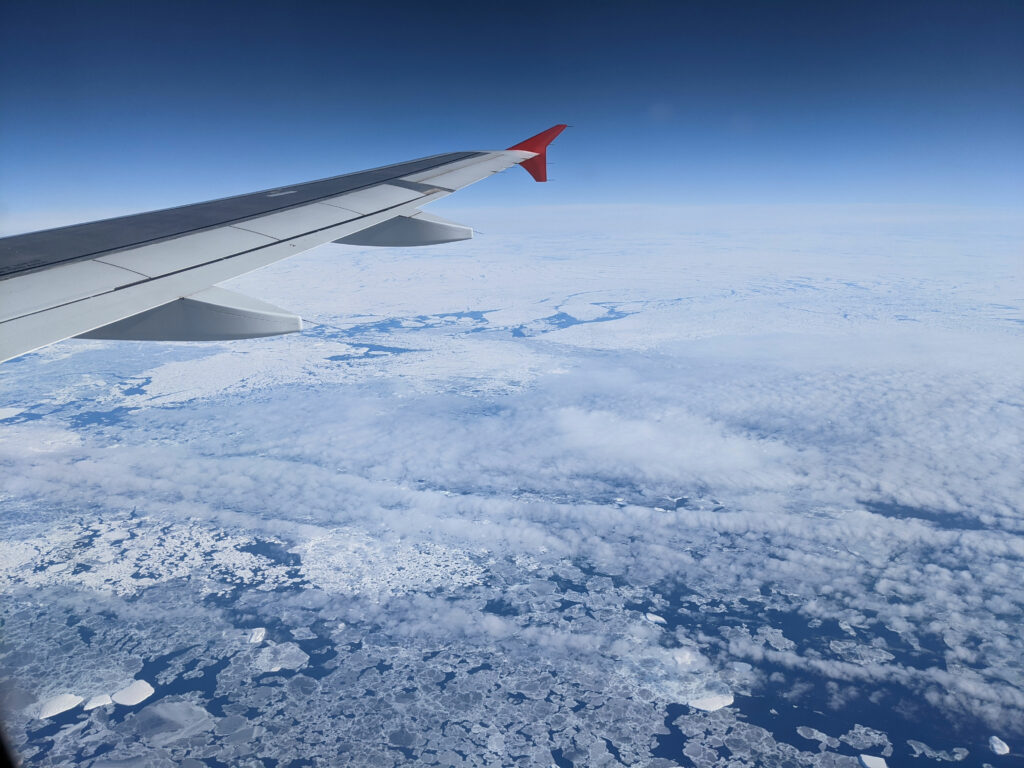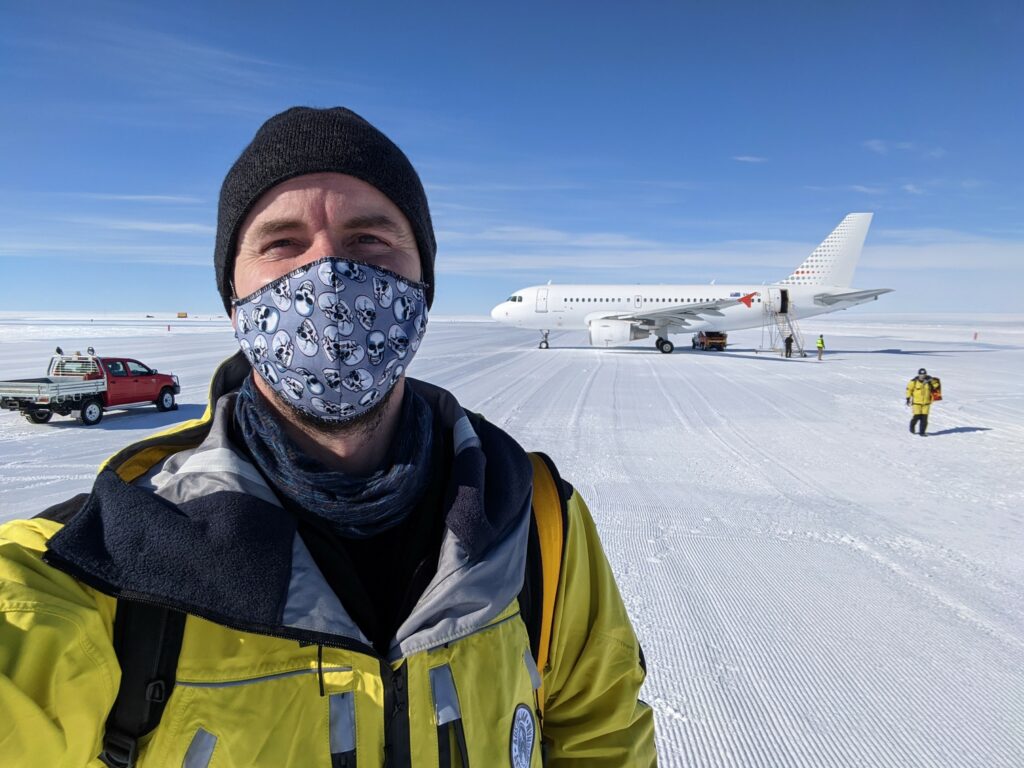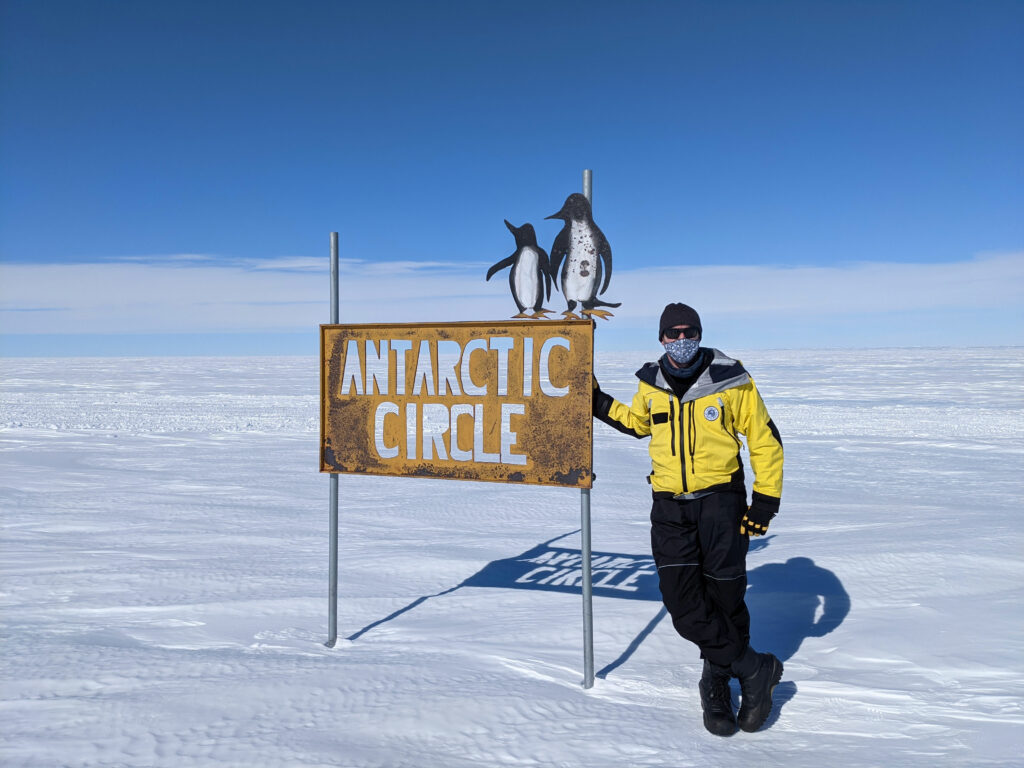After work this week we took a quick trip out to Robbos hut.
Month: November 2020
Talking photos of birds for science
It’s an unusual season down here this year, and unfortunately many of our science friends are unable to be on station to continue working onsite on their studies.
One long-running program is seabird monitoring – a series of mounted cameras at verious penguin colonies. The solar-powered camera setups are programmed to open the protective lens cover, take a photo, and close the cover again, several times per day during the breeding season.
Today I was able to get out to see the penguins and maintain some of the camera setups. By uploading the imagery I’m able to assist this program in their long term studies of these seabirds.
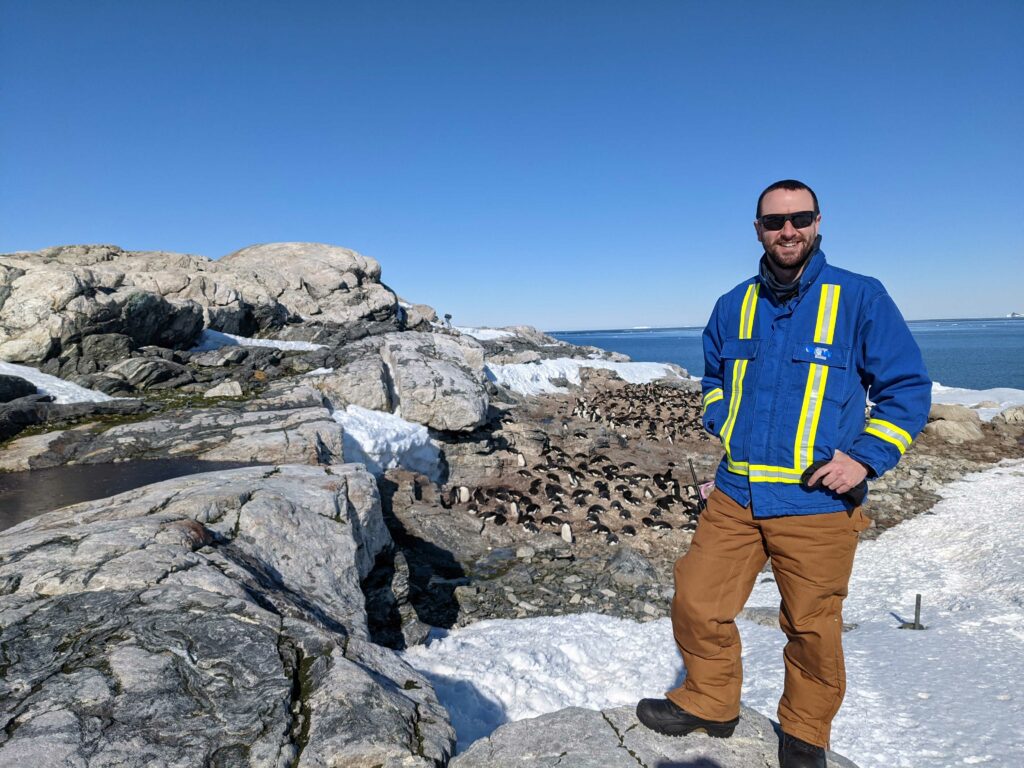
Keeping a safe distance from the colony 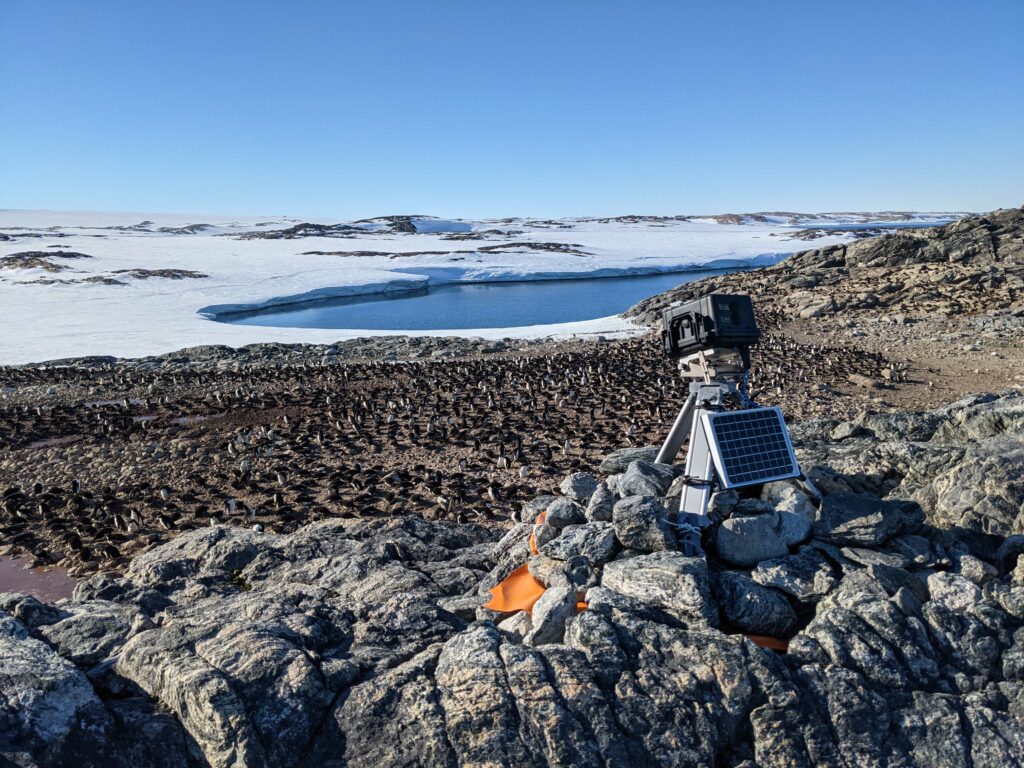
One of the camera setups
Sleeping in a chip packet
After three years it’s time to renew Antarctic “Survival Training” – a 24 hour course designed to familiarise you with Antarctic cold weather gear, equipment, basic navigation, and of course head out into the field and look at some penguins.
This week we did Survival Training, so we got our packs together and headed off station to Shirley Island. It’s a great opportunity to see the Adelie penguins going about their day getting their nests ready.
At the end of the day in training you sit down to a dehydrated meal kit, unroll your bivvy (bivouac bag), and crawl into bed for the night. With the bright sky, cold air, and wind rustling your bivvy (affectionately called “ship packets” by Aussie expeditioners as they are made out of nylon), it’s a bit hard to get a great night’s sleep. Still an amazing Antarctic experience though!
In the morning we were packed up and headed back to station for a meal and hot shower to warm up.
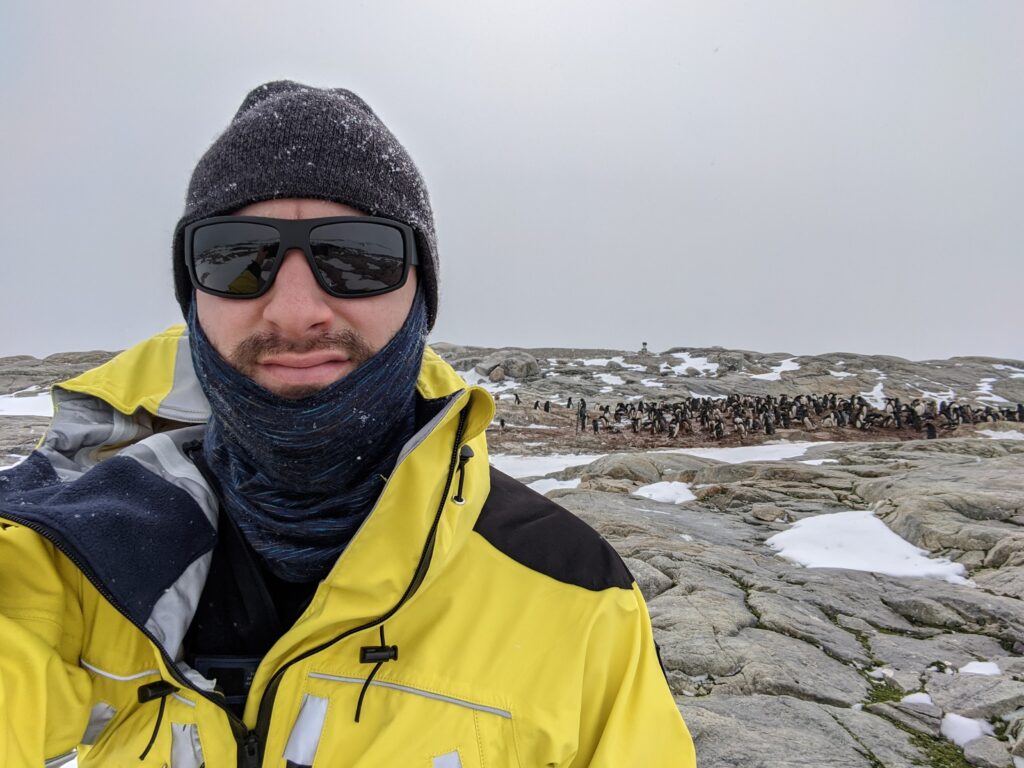
Over to Shirley Island to see the Adelies 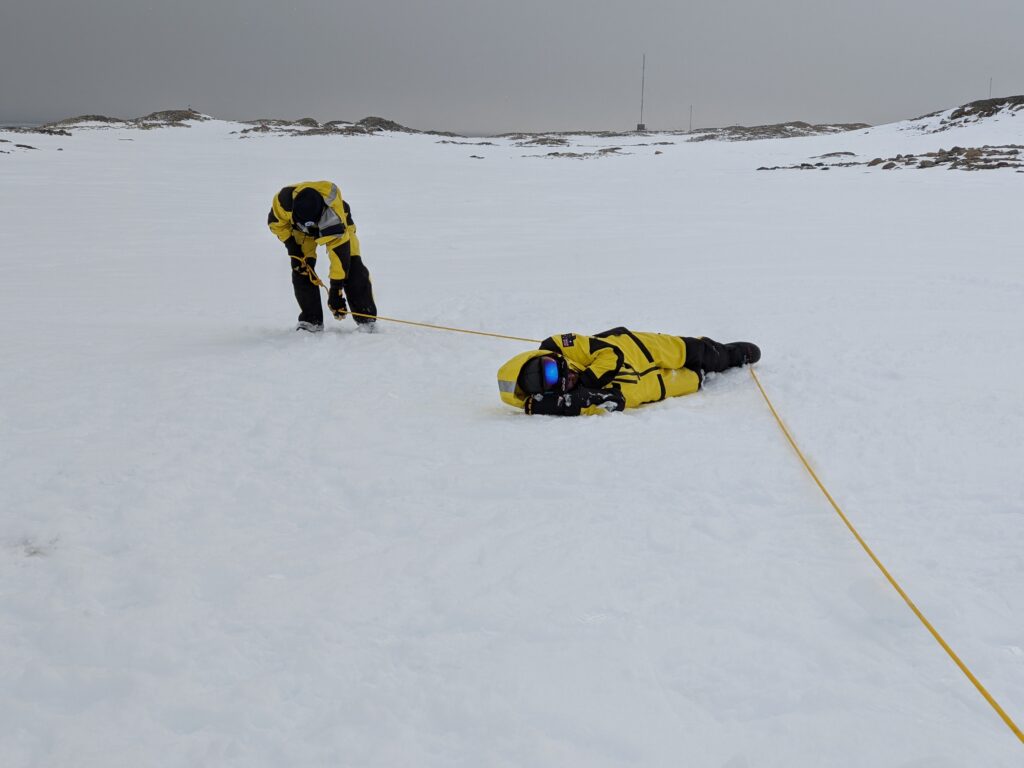
Practicing “blind” recovery skills, in case of a blizzard 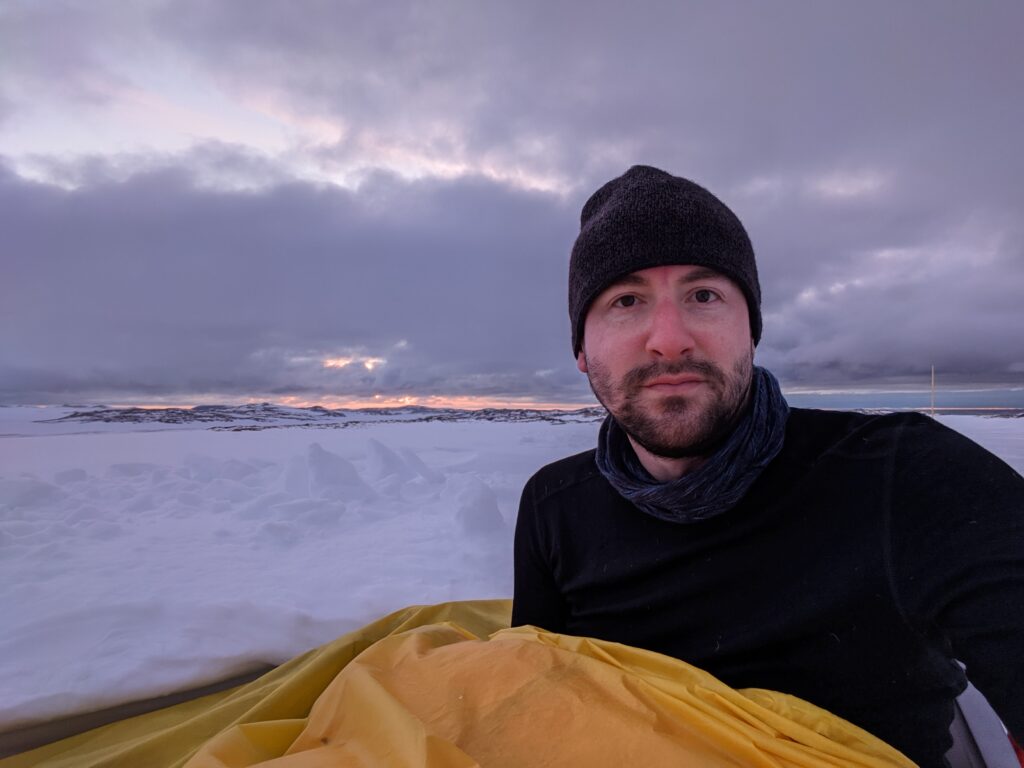
2am and can’t sleep
Flying south for the season
The season is now underway! On Wednesday we had an early start and departed Hobart airport at 07:00. The flight to Wilkins Runway, Antartica feels rather short, being only 4.5 hours in the air.
We arrived at Wilkins blue ice runway in perfect conditions. With a quick swap from the plane to the hagglunds (snow-tracked vehicles) we were on our way again, heading down the hill to Casey station.
Things got underway pretty quickly, getting straight down to work and setting up equipment for the season.
This weekend, I’m off station to complete Antarctic “survival training”, which involves camping out in the snow overnight. I’m looking forward to it!
